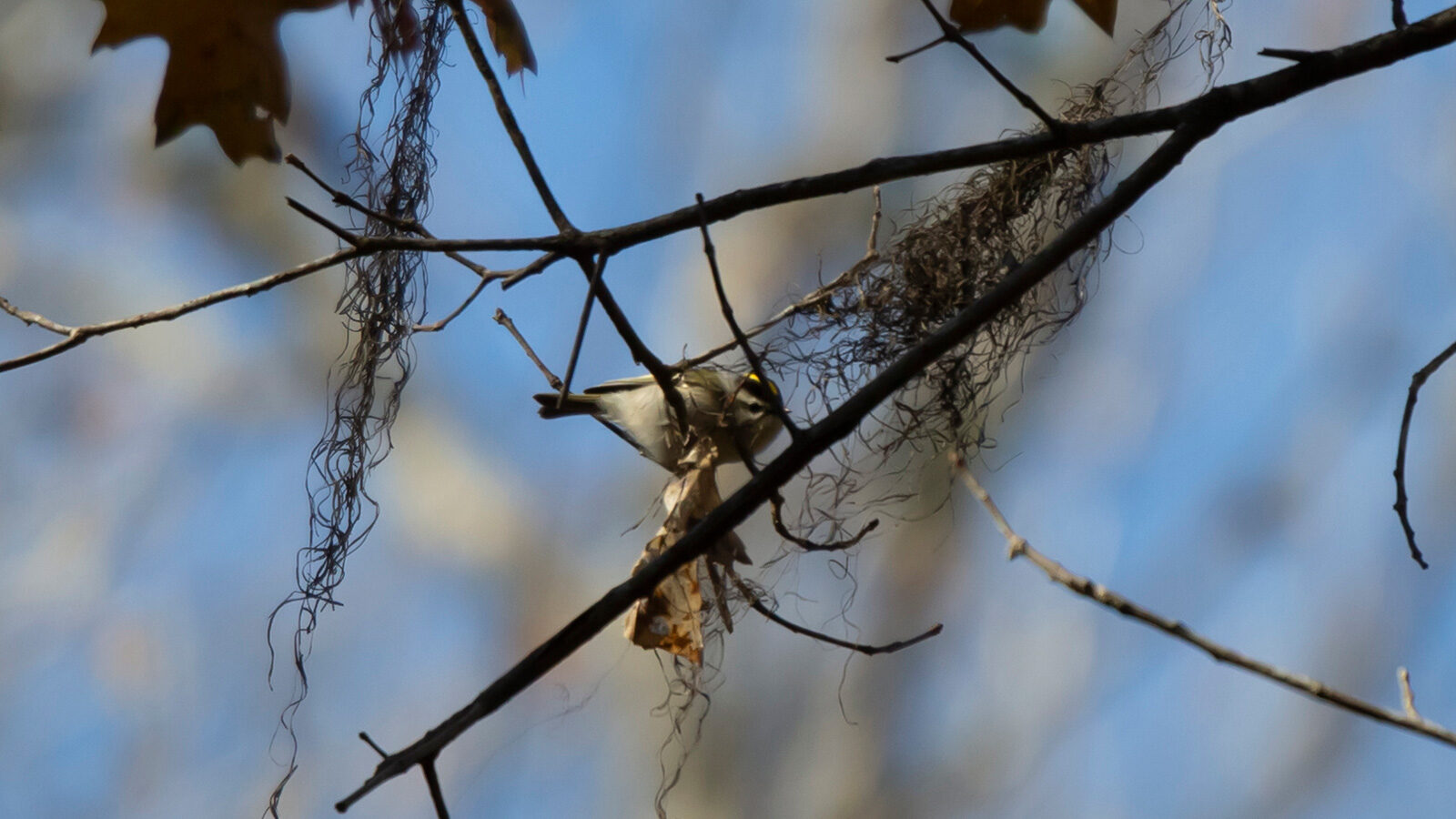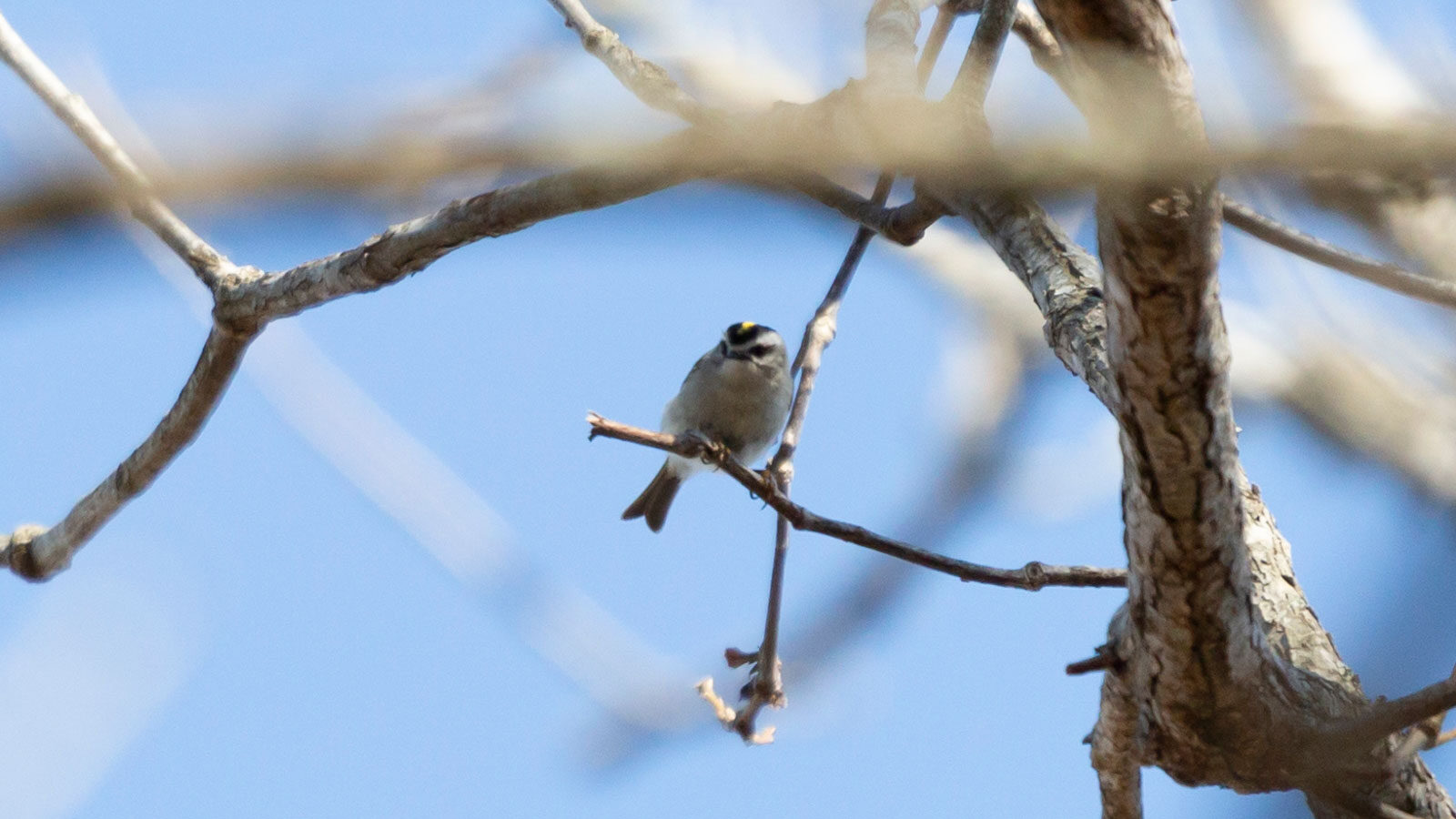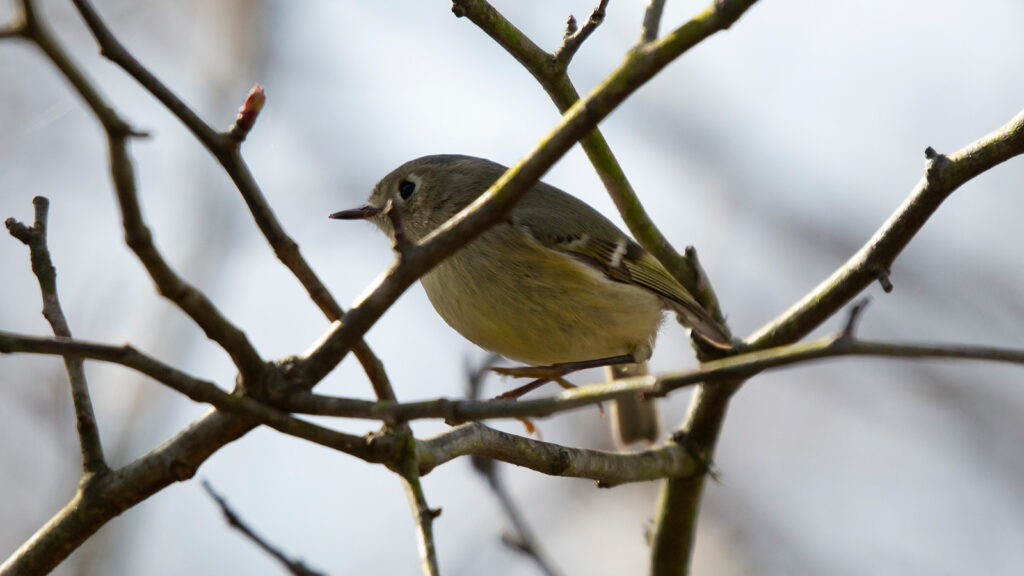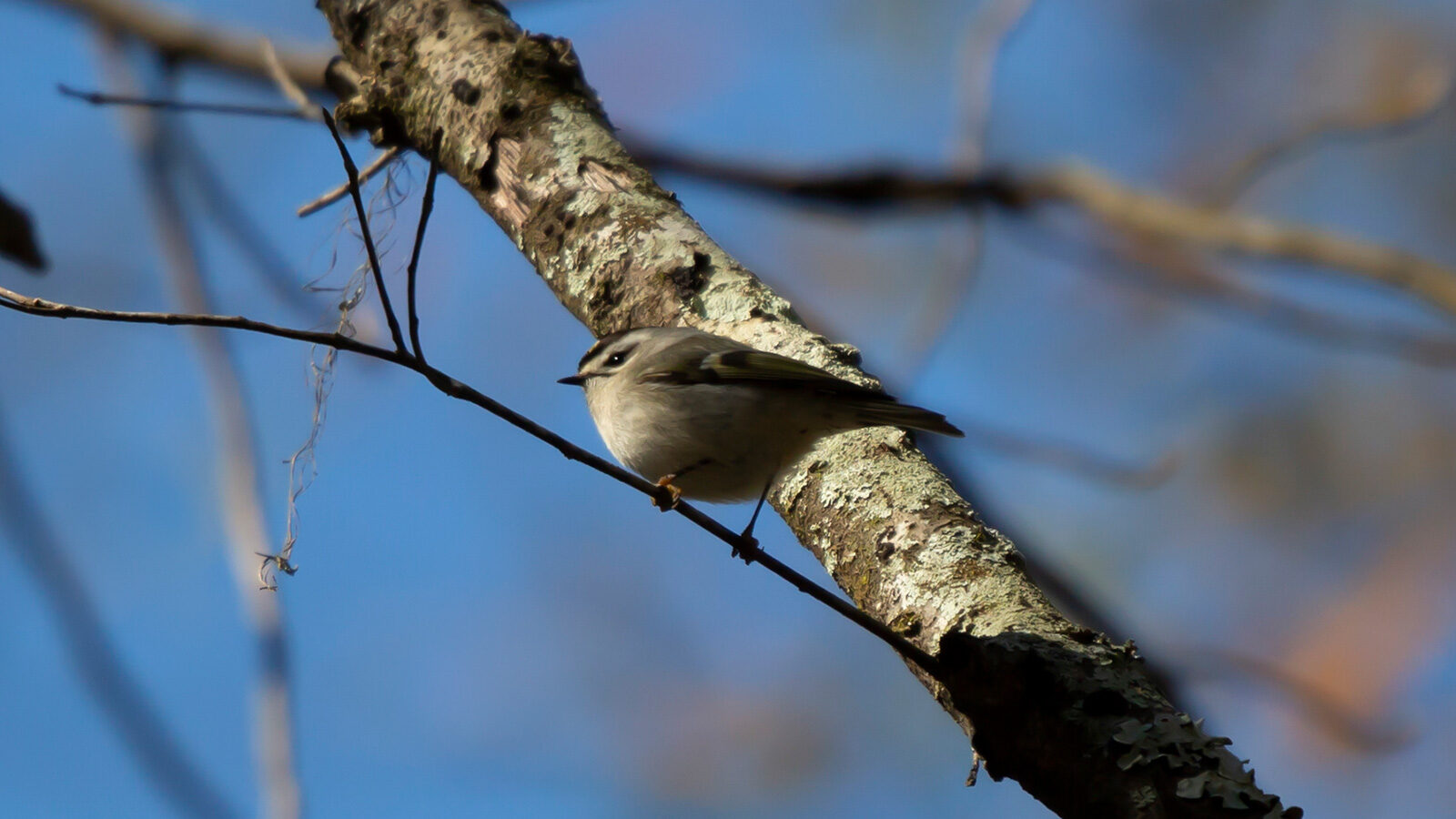
Did you know that golden-crowned kinglets can winter where the temperature drops below 40 degrees Fahrenheit?
Golden-Crowned Kinglets
at
a Glance

Key Features:
Golden-crowned kinglets are tiny olive birds with grey underparts, black and white stripes on their faces, and an orange patch on their heads. Females have a yellow patch on their heads. Immature golden-crowned kinglets do not have the head stripes and orange patch.
Least Concern - Population Increasing
Habitat:
Backyards, fields, forests, and parks
nesting habits:
Golden-crowned kinglets build nests in the tops of coniferous trees out of bark, cocoons, deer hair, feathers, insect parts, lichen, moss, spiderwebs, and twigs.
seasons golden-crowned kinglets are active in our area:
Winter
Diet:
Insects
hunting Behavior:
Golden-crowned kinglets forage in trees by hopping, hanging upside down, and hovering to glean.
Commonly Confused With:
Brown Creepers and Ruby-Crowned Kinglets

Golden-crowned kinglets are often confused with ruby-crowned kinglets because both are tiny birds with gray and olive. Golden-crowned kinglets have black and white stripes on their faces. Male ruby-crowned kinglets have red on their heads. Female ruby-crowned kinglets do not have a patch on their heads.

Golden-crowned kinglets are often confused for brown creepers because they have very similar calls. Golden-crowned kinglets have shorter calls.